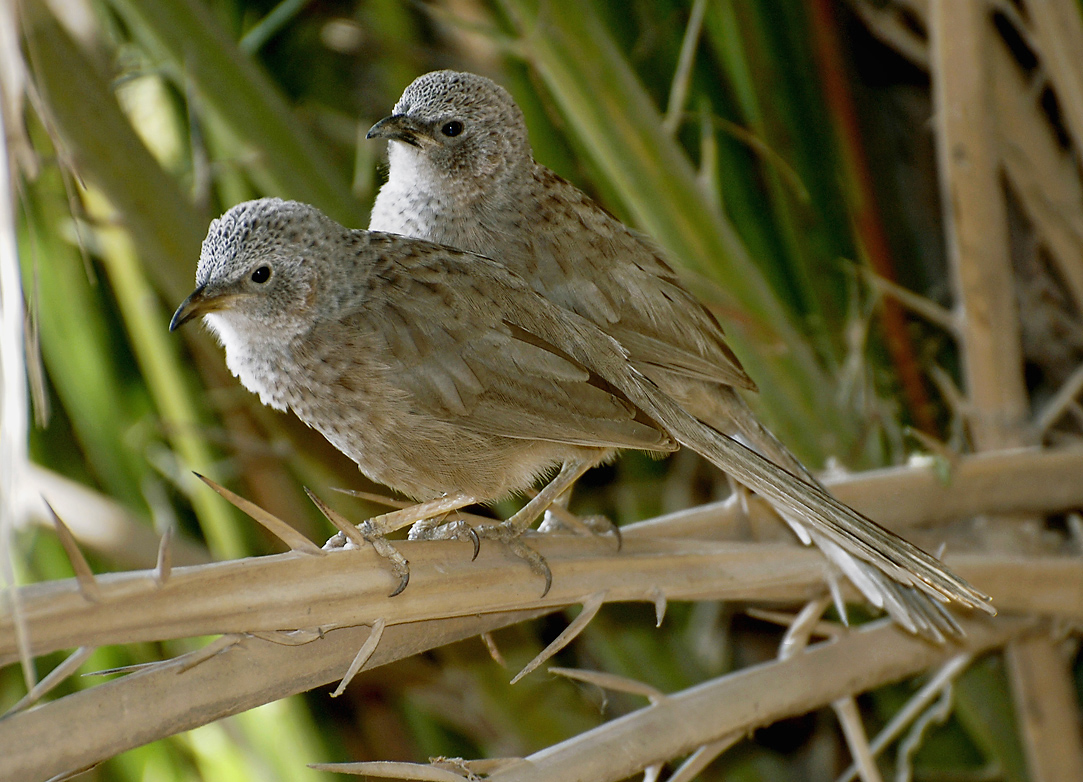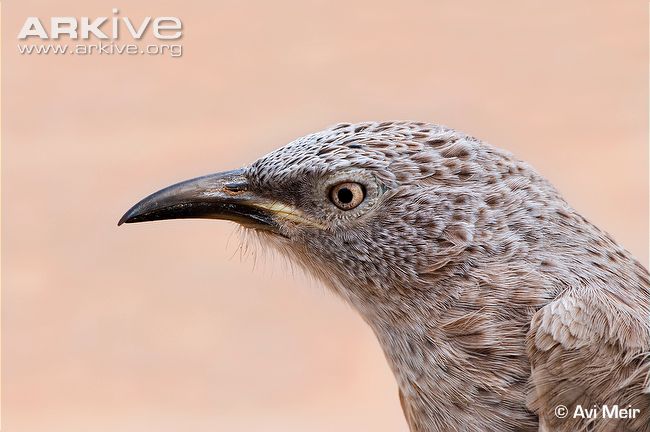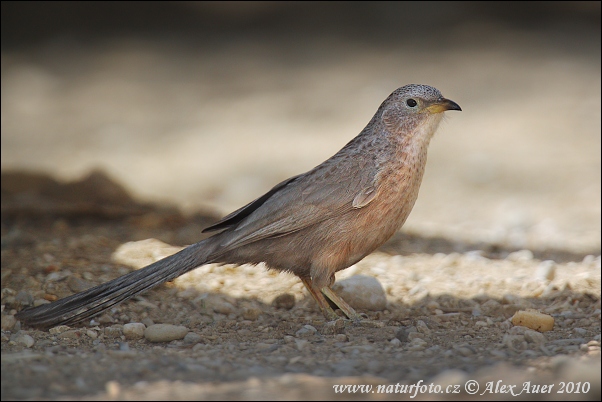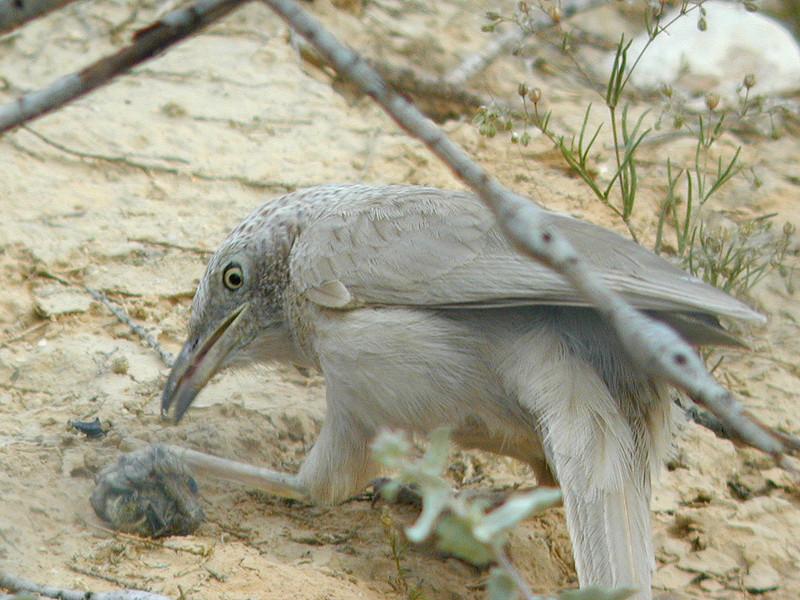
Turdoides squamiceps
SUBFAMILY
TAXONOMY
Malurus squamiceps Cretzschmar, 1827, Transjordan. Three
subspecies.
OTHER COMMON NAMES
French: Cratйrope йcaillй; German: Graudrossling; Spanish:
Tordalino Arбbigo.
PHYSICAL CHARACTERISTICS
11 in (28 cm). Slender grayish brown, long-tailed bird, which
may remind Americans of thrashers (Mimidae). Plumage identical
in both sexes, but male’s eyes pale yellow, female’s brown.
DISTRIBUTION
Israel (Negev, Dead Sea Depression, Arava Valley, Sinai), Jordan,
coastal Arabian Peninsula (except for Red Sea Coast).
HABITAT
Dependent on vegetation and water sources, but otherwise a
dry country bird, favoring acacias, tamarisk, saltbush, and datepalm
groves and gardens.
BEHAVIOR
Complex social system, reminiscent of wolves. Lives in groups
of six to a dozen, but sometimes more than 20, composed of
an alpha breeding pair, usually the oldest birds, which maintain
a strict dominance hierarchy over rest of unit. Groups compete
with others for fixed territories, and may displace them, sometimes
violently. Most unit members related to breeders, but
some recruitment of unrelated birds from nearby colonies.
When not actively foraging, generally secreted in bushes.
FEEDING ECOLOGY AND DIET
Opportunistic feeders, energetically foraging in groups for
anything edible. Main items include very wide variety of
arthropods, small reptiles, berries, flowers, nectar, seeds, and
garbage.
REPRODUCTIVE BIOLOGY
In some units, only the alpha male mates with any of the females.
In others, subordinate males may breed with subordinate
females, but the alpha female is always the one most
fiercely defended by the alpha male. Courtship
BEHAVIOR
appears
to be initiated by females soliciting subordinate males in
the group, causing the alpha male to aggressively prevent copulations.
No copulations take place if other members of the
group are present. (As a rule, they actively interfere with impending
matings, only dominant males being able to prevent
other group members from following potential breeding pair).
Successful copulation takes place in seclusion of bushes. Nest is
large, untidy, cup-shaped structure, composed of coarse plant
materials, with no clearly defined lining. Generally, only one is
constructed in a group’s territory. Up to three females may lay
eggs in group’s nest. Eggs are glossy turquoise. Clutch size per
female varies from three to five. At night, only the alpha female
incubates, but any female in the group may do so in daytime.
Eggs take 13–14 days to hatch, and hatching may occur
continuously through breeding season, so that nest may be occupied
by large number of chicks of disparate ages. All members
of group feed chicks, often competing to do so. Unusually
long reproductive longevity for a passerine bird. Sexual maturity
not attained until two years, some may remain non-breeders
in group as long as six years. Individuals may still be group’s
alpha breeders at 13 years of age.
CONSERVATION STATUS
Globally non-threatened. Range has expanded, especially in Israel,
due to irrigation and abundance of food (including
garbage) around residences.
SIGNIFICANCE TO HUMANS
This species may pose some harm to certain types of agriculture,
eating such products as sorghum. On the other hand,
they consume vast numbers of potentially harmful insects, such
as termites and weevils, and are especially avid tick eaters. Subject
of continuous research for decades.
Photo Gallery of - Arabian babbler




 Animalia Life
Animalia Life